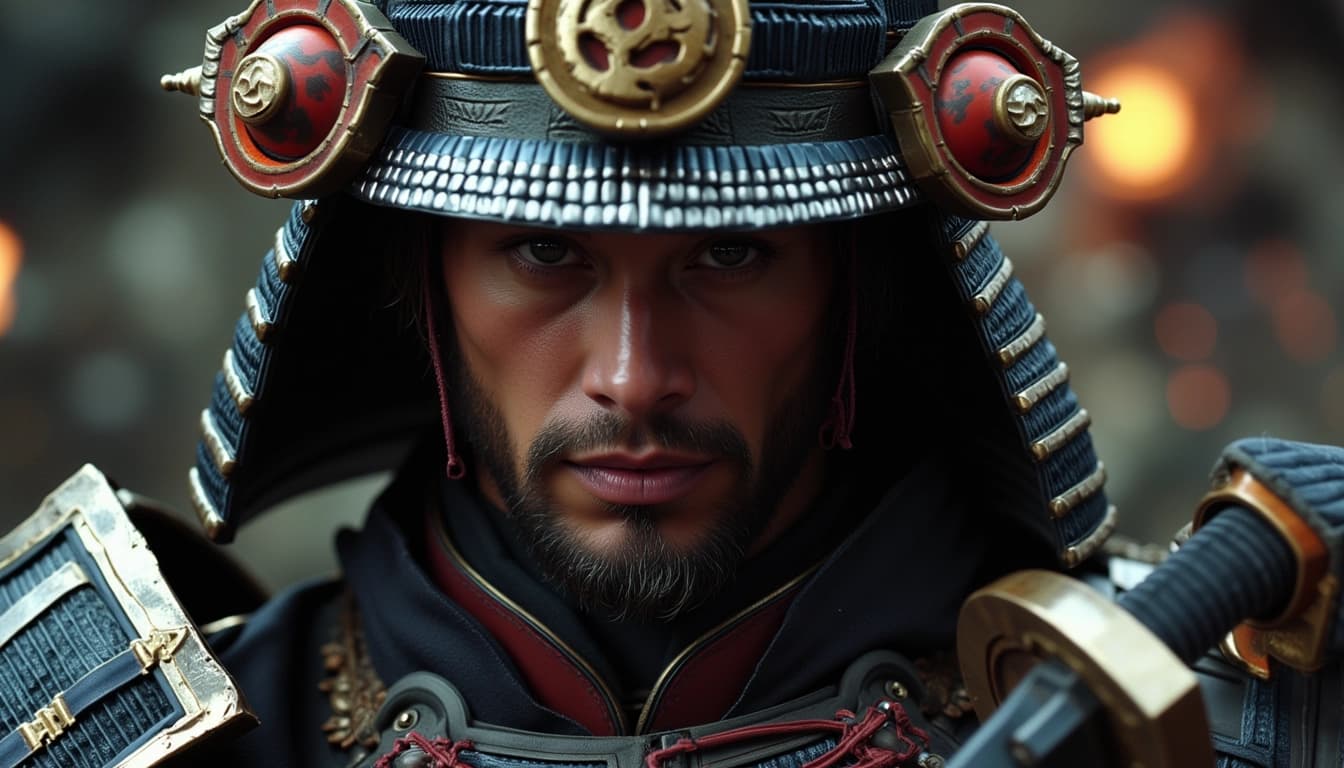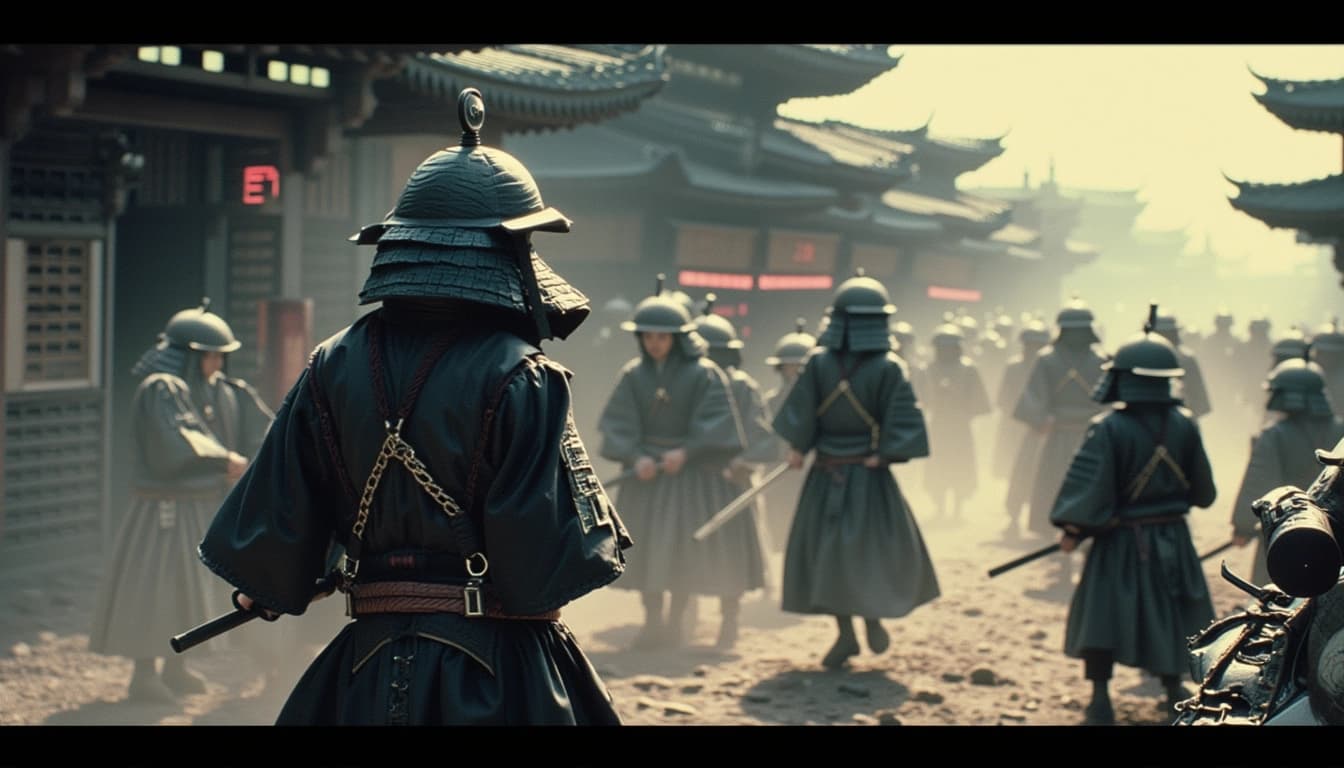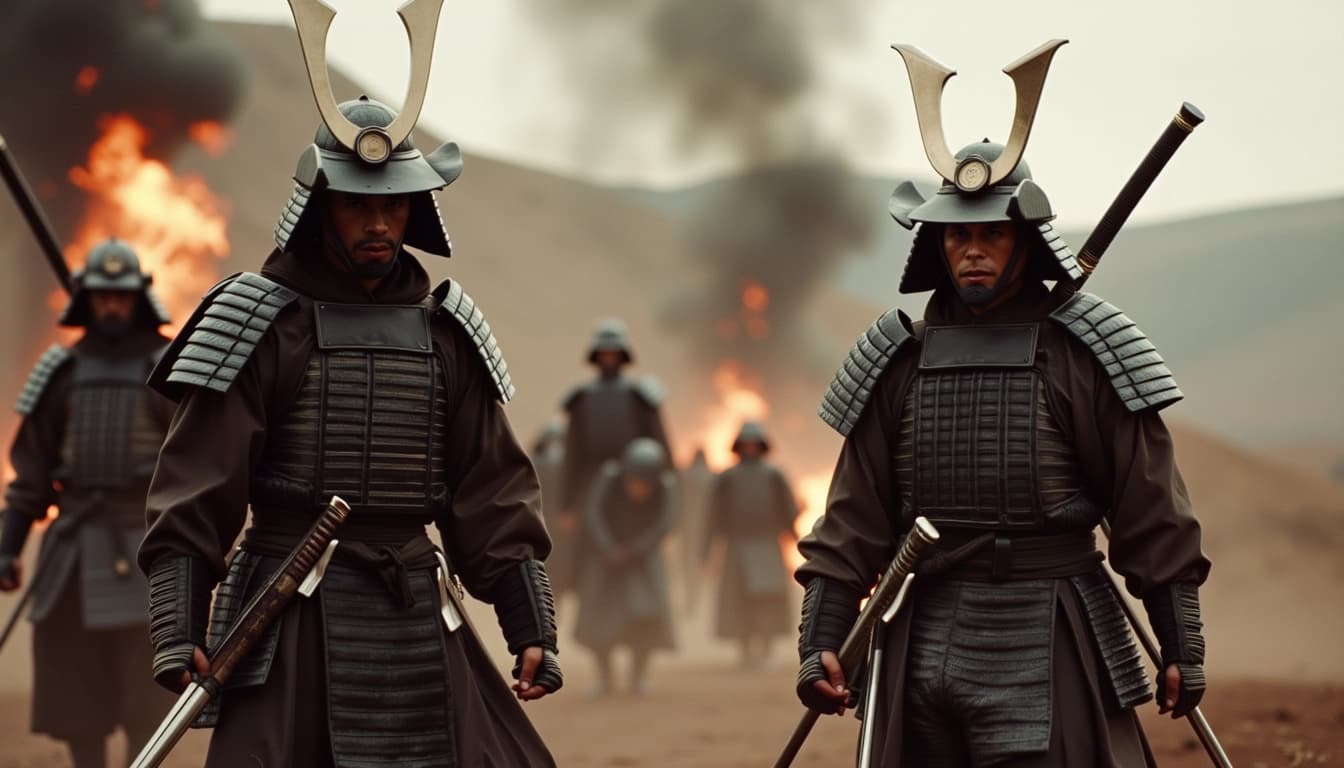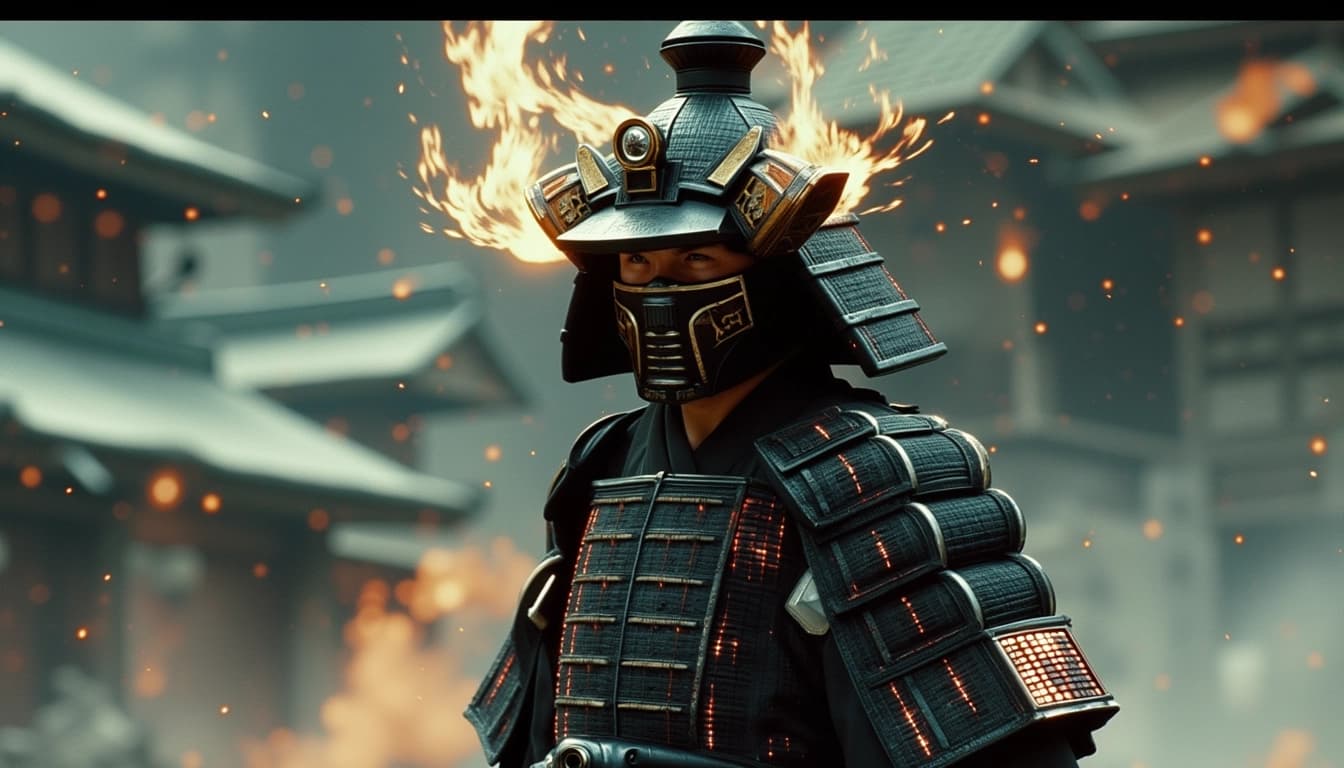
Key Points on Samurais and AI Video Generation
By John Doe 5 min
Key Points
Research suggests samurais are unique for their warrior status, bushido code, and precise fighting styles like swordsmanship.
It seems likely that zero-shot motion in AI video generates samurai movements without specific training data, using textual descriptions.
The evidence leans toward AI enhancing historical understanding by animating samurai actions, though accuracy remains a challenge.
Introduction to Samurais
Samurais, the elite warriors of feudal Japan, are renowned for their strict code of honor, bushido, and distinctive fighting techniques. Their unique status and cultural impact make them a fascinating subject for modern technology like AI.
Zero-Shot Motion in AI Video
Zero-shot motion in AI video refers to AI's ability to create motion sequences in videos without prior specific training data, relying on general knowledge and textual inputs. This technology is advancing, with applications in generating realistic movements for historical figures.
Application to Samurais
AI can generate videos of samurais performing their iconic sword techniques, based on historical texts or paintings, offering educational and cultural preservation benefits. However, ensuring historical accuracy is complex, and there’s ongoing debate about AI's reliability in such contexts.
Survey Note: Detailed Exploration of Samurai Uniqueness and AI Video Generation
The Uniqueness of Samurais
Samurais, emerging in the 10th century, were not just warriors but a social class integral to Japanese feudal society. Their uniqueness lies in several dimensions:
- Historical Context and Status: Samurais served as protectors and administrators, rising to power by the 12th century and dominating until the Meiji Restoration in 1868. They were the highest social caste, distinguishing themselves by wearing two swords, the katana and wakizashi.
- Code of Honor (Bushido): The bushido code emphasized loyalty, martial arts mastery, and honor unto death, shaping their identity and actions.
The samurai were a class of warriors in feudal Japan who played a significant role in shaping the country's history and culture. They were known for their martial skills, strict code of ethics, and influence beyond the battlefield. Their legacy continues to fascinate people worldwide, reflecting their discipline, honor, and unique way of life.
The Bushido Code
Bushido, meaning 'the way of the warrior,' was the ethical code that guided the samurai. It emphasized values such as loyalty, honor, and self-discipline. This code dictated their behavior in both battle and daily life, with practices like seppuku (ritual suicide) being a respected alternative to dishonor. The Bushido code was deeply ingrained in samurai culture and influenced their decisions and actions.
Key Principles of Bushido
The Bushido code included several key principles, such as righteousness, courage, benevolence, respect, honesty, and loyalty. These principles were not just theoretical but were practiced in everyday life. For example, a samurai was expected to show unwavering loyalty to their lord, even at the cost of their own life. This strict adherence to Bushido set the samurai apart from other warrior classes.
Fighting Style and Techniques
Samurais were highly skilled in various martial arts, including kenjutsu (swordsmanship), kyujutsu (archery), sojutsu (spear fighting), and jujitsu (hand-to-hand combat). Their fighting style was characterized by precision, discipline, and efficiency. Techniques like iaido, which focused on drawing and cutting in one motion, were particularly revered. The samurai's ability to adapt to different combat situations made them formidable opponents.
Sword Fighting Techniques
Sword fighting was a cornerstone of samurai combat. Their techniques involved slow preparation followed by swift execution, with specific cuts and blocks designed to target vital points. The katana, their primary weapon, was renowned for its sharpness and craftsmanship. Mastery of the katana required years of training and was a symbol of a samurai's skill and status.
Weapons and Dress
The samurai's weapons and attire were integral to their identity. The katana and wakizashi (a shorter sword) were their primary weapons, with the latter often used for indoor combat. Their armor was designed for both protection and mobility, often adorned with family crests. The kimono and topknot hairstyle further distinguished them as members of the warrior class.

Role in Society and Culture
Beyond their military role, samurais influenced Japanese governance, arts, and education. They participated in cultural practices like the tea ceremony and ikebana (flower arranging), showcasing their refinement. Their emphasis on education and philosophy contributed to Japan's intellectual development. The samurai's legacy is evident in modern Japan's values and traditions.
Conclusion & Next Steps
The samurai remain a symbol of discipline, honor, and cultural richness. Their influence extends beyond history into modern interpretations in media and martial arts. To learn more about the samurai, consider exploring historical texts, visiting museums, or practicing martial arts inspired by their techniques. Their legacy offers valuable lessons in leadership and ethics.
- Study the Bushido code to understand samurai ethics.
- Visit historical sites in Japan to see samurai artifacts.
- Practice martial arts like kendo or iaido to experience their techniques.
Zero-shot learning in AI video generation is a cutting-edge approach that enables the creation of motion sequences without prior examples. This technology leverages general knowledge and semantic understanding, often derived from textual descriptions, to generate realistic movements.
Definition and Mechanism
Zero-shot learning allows AI to perform tasks on unseen classes by generalizing from existing knowledge. In the context of video generation, this means creating new motion sequences based on inputs like text, without the need for fine-tuning or specific training data. For example, AI can animate an image based on user-defined motion trajectories, as demonstrated by technologies like Img2VidAnim-Zero.
Recent Advancements
Recent developments in zero-shot motion generation include technologies like Motion-Zero, which enables bounding-box-trajectories-controlled text-to-video diffusion models. These advancements improve motion control without requiring additional training. Another example is CrowdMoGen, which uses large language models (LLMs) for text-driven crowd motion generation, showcasing scalability and versatility.
Applications
Beyond historical figures, zero-shot motion generation has diverse applications in animation, gaming, and education. It can generate realistic movements for characters in various contexts, enhancing the visual storytelling experience. For instance, NVIDIA Research has demonstrated how AI can generate motion capture animation without hardware or motion data.
Connecting AI to Samurai Representation
Applying zero-shot motion in AI video to samurais can revolutionize our understanding and representation of their unique movements. This technology can be used to generate historical videos of samurais performing sword techniques based on historical descriptions, bringing ancient warriors to life in a visually compelling way.
Conclusion & Next Steps
Zero-shot motion generation represents a significant leap forward in AI-driven video creation. By enabling the generation of realistic movements from textual descriptions, this technology opens up new possibilities for historical representation, entertainment, and education. Future research should focus on refining motion accuracy and expanding the range of applications.

- Enhance motion accuracy for historical figures
- Expand applications to other cultural representations
- Improve scalability for large-scale motion generation
AI-generated videos are revolutionizing the way we visualize historical martial arts, such as samurai techniques. These videos use advanced algorithms to create realistic animations based on textual descriptions, bringing ancient practices to life. This technology is particularly useful for educational and cultural preservation purposes.
Zero-Shot Motion Generation
Zero-shot motion generation allows AI to animate movements without pre-existing motion data. For example, a description like 'rapid cuts and thrusts' can be transformed into a fluid samurai sword technique. This approach relies on general motion knowledge and text inputs, making it highly versatile for historical reconstructions.
Example of Iaido Technique
A samurai's iaido technique, involving the draw and cut in one motion, can be animated accurately. This demonstrates the potential of AI to recreate complex martial arts movements from simple descriptions. Such animations can be used in films, games, or educational materials.
Educational Applications
AI-generated videos are valuable tools for educators teaching samurai history or martial arts. These clips can illustrate kenjutsu techniques, making lessons more engaging and interactive. Students can visualize historical practices in a way that textbooks alone cannot achieve.

Cultural Preservation
AI can help reconstruct lost or obscure samurai practices, such as naginatajutsu, from historical texts or paintings. This technology preserves cultural heritage by providing visual representations of techniques that might otherwise be forgotten. It bridges the gap between past and present.
Artistic and Entertainment Uses
Filmmakers and game developers can leverage AI to create realistic samurai battles. These animations enhance storytelling by adding historically inspired motions to scenes. The result is a more immersive experience for audiences and players alike.

Challenges and Limitations
Despite its potential, AI-generated samurai videos face challenges. Ensuring historical accuracy is difficult due to the lack of direct video footage. Misinterpretations of vague historical texts can lead to inaccuracies, which may misrepresent cultural practices.
Ethical Considerations
There is a risk of cultural misrepresentation, such as stereotyping samurai or oversimplifying their techniques. Ethical guidelines must be followed to ensure respectful and accurate portrayals. This includes consulting historians and cultural experts during the AI training process.
Conclusion & Next Steps
AI-generated videos offer exciting possibilities for visualizing samurai techniques, from education to entertainment. However, careful attention must be paid to historical accuracy and ethical representation. Future advancements in AI will likely improve the quality and reliability of these animations.
- Zero-shot motion generation enables animations from text descriptions.
- Educational tools benefit from realistic samurai technique demonstrations.
- Cultural preservation is enhanced through AI reconstructions of lost practices.
The application of zero-shot motion in AI video generation is transforming how we visualize historical figures, including samurais. This technology allows for the creation of lifelike movements from static images without prior training on specific data. It opens up new possibilities for education, entertainment, and cultural preservation.
Understanding Zero-Shot Motion in AI
Zero-shot motion refers to the ability of AI models to generate realistic movements from static images without requiring extensive training on similar datasets. This is particularly useful for historical figures like samurais, where detailed motion data may not exist. The technology leverages advanced algorithms to predict and animate plausible motions based on contextual clues.
Key Technologies Behind Zero-Shot Motion
Several technologies enable zero-shot motion, including deep learning models like GANs and transformers. These models analyze the structure and context of an image to generate realistic animations. For samurais, this could mean animating a portrait to perform a bow or a sword strike, all while maintaining historical accuracy.
Applications for Samurai Representation
Zero-shot motion can be applied in various ways to bring samurai history to life. Educational platforms can use it to demonstrate martial arts techniques, while museums can create interactive exhibits. Filmmakers and game developers can also leverage this technology to enhance historical accuracy in their projects.

Challenges and Ethical Considerations
Despite its potential, zero-shot motion for samurais faces challenges. Ensuring historical accuracy is paramount, as inaccurate animations could misrepresent cultural heritage. Ethical concerns also arise regarding the use of AI to animate historical figures, potentially disrespecting their legacy.
Future Directions
The future of zero-shot motion in AI video generation is promising. Advances in AI will likely improve the realism and accuracy of animations, making them even more valuable for historical representation. Collaboration with historians and cultural experts will be essential to ensure respectful and accurate depictions.
- Enhancing educational tools with interactive samurai animations
- Creating immersive museum experiences with AI-generated motions
- Improving historical films and games with accurate depictions
The samurai, Japan's legendary warrior class, have long fascinated historians and enthusiasts alike. Their disciplined way of life, martial prowess, and adherence to the bushido code set them apart as iconic figures in Japanese history. Today, advancements in AI technology are opening new avenues to explore their legacy through innovative methods like zero-shot motion in video generation.
The Legacy of the Samurai
Samurai warriors emerged in the 10th century as provincial warriors before rising to power during the 12th century. They were not only skilled fighters but also cultured individuals who practiced poetry, calligraphy, and tea ceremonies. Their influence extended beyond the battlefield, shaping Japan's political and social structures for centuries. The bushido code, emphasizing loyalty, honor, and discipline, remains a cornerstone of their enduring legacy.
The Bushido Code
The bushido code, or 'the way of the warrior,' was the moral compass guiding samurai behavior. It emphasized virtues such as courage, integrity, and respect, which were integral to their identity. This code was not just about combat but also about living a life of purpose and dignity. Even today, bushido principles inspire modern martial arts and business ethics, reflecting the timeless relevance of samurai values.
AI and Samurai Studies
Recent advancements in AI, particularly zero-shot motion in video generation, are revolutionizing how we study and visualize samurai history. This technology allows historians and enthusiasts to create lifelike animations of samurai movements without extensive training data. By inputting static images or descriptions, AI can generate dynamic sequences, offering a glimpse into their combat techniques and daily rituals.
Zero-Shot Motion Explained
Zero-shot motion is a cutting-edge AI technique that enables video generation from single images or text prompts without prior examples. Unlike traditional methods requiring vast datasets, this approach leverages pre-trained models to infer motion patterns. For samurai studies, this means animating historical figures or scenes with minimal input, preserving accuracy while reducing research time and costs.
Ethical Considerations
While AI offers exciting possibilities, it also raises ethical questions about cultural representation and historical accuracy. Ensuring that generated content respects samurai heritage requires collaboration between technologists, historians, and cultural experts. Misinterpretations or oversimplifications could distort public understanding, underscoring the need for responsible AI deployment in historical research.
Conclusion & Next Steps
The fusion of AI and samurai studies through zero-shot motion represents a bold step toward preserving and sharing their legacy. By combining technology with scholarly rigor, we can create immersive, educational experiences that honor their history. Future efforts should focus on refining AI models, fostering interdisciplinary partnerships, and engaging global audiences with Japan's rich warrior tradition.
- Explore AI-generated samurai animations in museums
- Develop educational programs on bushido ethics
- Support collaborations between AI researchers and historians
The rapid advancement of artificial intelligence has opened up new possibilities in various fields, including historical recreation and animation. AI tools are now capable of bringing historical figures to life, animating old photos, and even generating realistic crowd motions. These technologies are transforming how we interact with and understand history.
AI-Powered Historical Recreation
AI tools like Deep Nostalgia and MyHeritage's AI Time Machine™ allow users to animate historical photos, making subjects blink, smile, or move. This technology provides a unique way to connect with the past, offering a glimpse into how historical figures might have looked and behaved in real life. The applications range from personal family history projects to educational tools in museums and classrooms.
Zero-Shot Learning in Historical AI
Zero-shot learning techniques enable AI systems to recognize and generate human motions or interactions without extensive training data. This is particularly useful for historical applications where detailed motion data may not exist. Researchers are leveraging these methods to create realistic animations of historical events or figures based on limited information.
Interactive Historical Experiences
Platforms like Hello History allow users to chat with AI-generated versions of historical figures, creating immersive educational experiences. These interactions are powered by large language models trained on historical texts and biographies, enabling surprisingly authentic conversations with figures from the past.
Future Applications and Ethical Considerations
As these technologies advance, we can expect more sophisticated historical recreations, including full-body animations and interactive historical scenarios. However, this also raises important ethical questions about accuracy, representation, and the potential for misuse in creating misleading historical narratives.
- AI-powered photo animation tools
- Zero-shot motion generation for historical figures
- Interactive chat with AI historical personas
- Ethical guidelines for historical AI applications
The integration of artificial intelligence into historical preservation has opened up fascinating new possibilities. AI-powered tools can now animate historical figures, bringing them to life in ways previously unimaginable. This technology allows us to see and hear historical personalities as they might have appeared in their time, offering a unique educational and entertainment experience.
AI Brings Historical Figures to Life
AI-driven animation tools are transforming static historical portraits into dynamic, lifelike representations. By analyzing facial features, clothing, and historical context, these tools generate realistic movements and expressions. This innovation not only enhances our understanding of history but also makes it more engaging for modern audiences.
Ethical Considerations in AI Animation
While the technology is impressive, it raises important ethical questions. How should we handle the portrayal of historical figures whose likenesses are recreated without their consent? What are the implications for historical accuracy when AI fills in gaps with educated guesses? These concerns must be addressed as the technology evolves.
Samurai Martial Arts and Combat Techniques
The samurai were not only skilled warriors but also practitioners of sophisticated martial arts. Their combat techniques were refined over centuries and included various weapons and unarmed fighting styles. These martial arts were deeply tied to the samurai code of bushido, emphasizing discipline, honor, and spiritual development.
Sword Fighting Styles of the Samurai
Kenjutsu, the art of the sword, was central to samurai training. Different schools developed unique techniques, from the aggressive strikes of the Katori Shinto-ryu to the defensive strategies of the Itto-ryu. Mastery of these styles required years of rigorous practice and mental conditioning.
Other Samurai Combat Skills

Beyond swordplay, samurai trained in various other martial arts. Jujutsu focused on grappling and throwing techniques for close combat. Kyujutsu was the art of archery, while sojutsu specialized in spear fighting. These diverse skills made the samurai versatile warriors on the battlefield.
The Legacy of Samurai Martial Arts
Many traditional Japanese martial arts practiced today evolved from samurai combat techniques. Modern disciplines like kendo, judo, and aikido preserve elements of these ancient fighting styles while adapting them for contemporary practice. This living tradition connects modern practitioners to Japan's warrior heritage.
- AI animation brings historical figures to life with remarkable realism
- Samurai martial arts included diverse weapons and unarmed techniques
- Modern Japanese martial arts preserve samurai traditions
- Ethical considerations accompany historical AI recreations